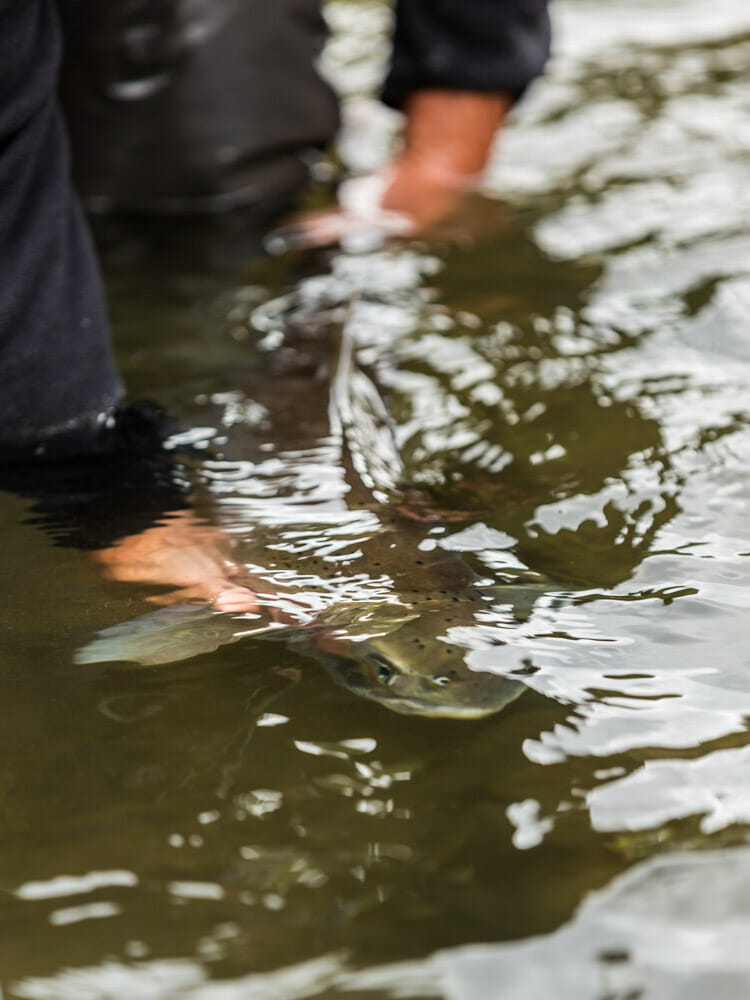Q.
Aren’t ocean conditions the primary cause of the decline?
Ocean conditions are certainly a major driver of salmon and steelhead abundance, and always have been. Conditions that salmon and steelhead experience in the eastern Pacific can change dramatically, based on natural global ocean-atmospheric interactions (like the Pacific Decadal Oscillation or El Niño Southern Oscillation) that create blocks of years (multiple years to decades) that are alternately warmer or colder.

“Not only did salmon and steelhead endure these extreme conditions, it is this dynamic landscape that has sculpted their main means of persistence: Diverse life histories.”
Ocean temperatures are also warming due to climate change. Conditions become particularly difficult for salmon when general ocean warming coincides with warm-water phases of the oscillations mentioned above. As one example, in 2014 an extreme (high) anomaly in surface temperatures, colloquially referred to as “the Blob,” set up and spanned from California to southern Alaska for several years. Yet, even with a greater frequency of adverse ocean conditions, there will continue to be years when ocean conditions are favorable to salmon and steelhead. When these positive conditions exist we need to enable salmon and steelhead to take advantage of them.
How do we do that? By increasing their abundance, productivity and diversity. It is these attributes that have allowed salmon and steelhead to withstand extreme environmental conditions throughout their evolutionary history. This history included four glacial cycles during which ocean conditions vacillated dramatically, and a period when the ocean was 115 meters below our current sea level.
Not only did salmon and steelhead endure these extreme conditions, but it is this dynamic landscape that has sculpted their main means of persistence: diverse life histories. Just as a financial portfolio spreads risk for us, their different migratory and reproductive strategies spread risk for them. The different strategies mean that not all of a given population or stock is in one place at one time – some are in the ocean, some are in freshwater, all at different ages.
For example, Chinook salmon are known to have 18 distinct life histories and steelhead an incredible 38. This portfolio of life histories buffers the population as a whole from environmental impacts that may be particularly bad in any single year, season, river, or creek. It is what allows them to persist through modern floods, fires, landslides, volcanic eruptions and changing ocean conditions. No doubt they will respond to take advantage of a free-flowing Snake River as ocean conditions cycle through to more productive conditions.
38
Steelhead are known to express
up to 38 life histories.
18
Chinook salmon are known to
express up to 18 life histories.

